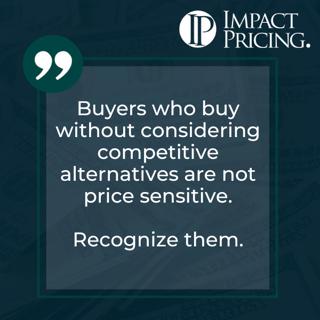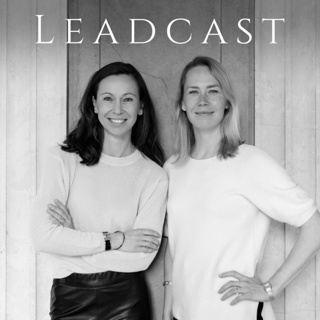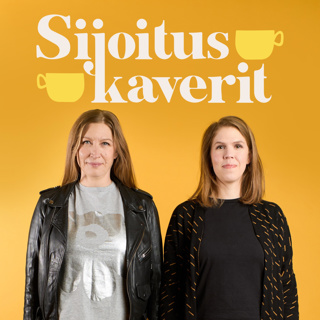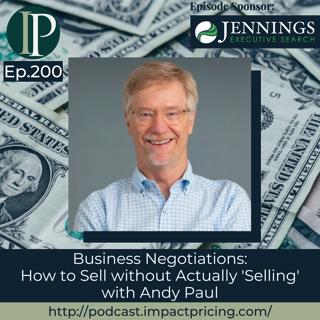
Business Negotiations: How to Sell without Actually 'Selling' with Andy Paul
Andy Paul is the author of Sell Without Selling Out. He's the host of the Sales Enablement Podcast, and has experience on being VP of Business Development and VP of Sales. In this episode, Andy talks about the importance of the “human element” and why we should utilize it more when it comes to business negotiations Why you have to check out today’s podcast: Learn how automated business sequences negatively affects your business Understand the importance of having the “human element” in business negotiations Find out why you should hire actual negotiation experts and not salespeople when it comes to price negotiations “Managers, take responsibility. Don't put the discounting in the hands of the sellers. And if managers show a little more discipline, then they can preserve the margins better.” – Andy Paul Topics Covered: 02:35 – The time Andy learned that pricing is important in the world of sales 06:02 – Selling is about listening to your customers and finding ways to help them 08:37 – How you should communicate value to a customer to make a successful sales meeting 13:28 – Making your customers feel understood is one step in winning sales 17:07 – Why salespeople are unable to utilize the human element 19:20 – Automated selling sequences is mostly persuasive, which is not the best way to go in sales 20:50 – Salespeople’s job is to build one on one relationships with customers, as all customers are not the same 22:30 – How salespeople should handle price segmentations or price negotiations 25:25 – Have professional contract negotiators handle negotiations, and you’ll end up getting better deals 29:11 – Andy’s pricing advice Key Takeaways: “I say sales, what you have to think about is your job as a salesperson is really nothing more than listening to your buyer, understanding the things that are most important to them in terms of the challenges they face and the outcomes they want to achieve by addressing those challenges and then helping them get that. That's your job. Listen and help.” – Andy Paul “If you can be the first to make the buyer feel understood, there are serious milestones happening that you can actually put yourself in the pole position, and win the deal at a higher frequency than your competitors.” – Andy Paul “When humanity becomes the differentiator and all the automated buying experiences start to become more similar, how do you stand apart? Being human.” – Andy Paul “Everyone wants to point the finger at salespeople as to be the blame for discounting. And the fault is really managers. It's not salespeople.” – Andy Paul People / Resources Mentioned: How to Sell Without Selling out: https://www.amazon.com/Sell-Without-Selling-Out-Success/dp/1989603572 Humans are Underrated: https://www.amazon.com/Humans-Are-Underrated-Achievers-Brilliant/dp/0143108379 Talent is Overrated: https://www.amazon.com/Talent-Overrated-Separates-World-Class-Performers/dp/1591842948 Geoffrey Colvin: https://geoffcolvin.com/ Toastmasters: https://www.toastmasters.org/ Connect with Andy Paul: LinkedIn: https://www.linkedin.com/in/realandypaul/ Website: https://www.andypaul.com/ Connect with Mark Stiving: LinkedIn: https://www.linkedin.com/in/stiving/ Email: mailto:mark@impactpricing.com
21 Marras 202233min

Blogcast #81: The Strategic Hot Dog
This is an Impact Pricing Blog published on October 12, 2022, turned into an audio podcast so you can listen on the go. Read Full Article Here: https://impactpricing.com/blog/the-strategic-hot-dog/ If you have any feedback, definitely send it. You can reach us at mark@impactpricing.com. Now, go make an impact. Connect with Mark Stiving: Email: mark@impactpricing.com LinkedIn: https://www.linkedin.com/in/stiving/
18 Marras 20222min
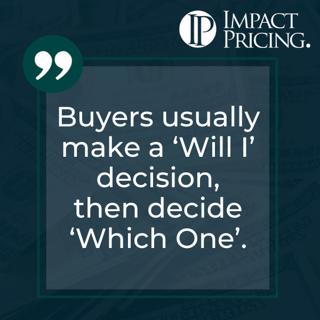
Memecast #84: Jack of Spades: Will I, then Which One
This one is the Jack of Spades from the Selling Value card deck. Buyers usually make a 'will I' decision, then decide 'which one'. They make the 'will I' decision, meaning, am I going to buy something in the product category? Am I going to buy a new car? Am I going to buy a new guitar? Am I going to buy a new refrigerator? Am I going to go out to dinner tonight? Am I going to hire a consultant? We make this 'will I' decision, and then after we've said, yes, I need a - you pick it - I need to hire a consultant, then we decide 'which one'. We interview several different consultants. We get bids from them. We see which ones we get along with. But then we're making that ‘which one’ decision. And it's very important for our sales people, our marketing people, even our product people, to understand the difference between these two questions because when buyers are making these two decisions, they're using different information and they care about different things. Oh, and from my perspective, the price sensitivity changes dramatically and they become much more price sensitive when they move to the 'which one' decision. We hope you enjoyed this memecast. This is also an example of how Pricing Table Topics works. Grab a deck of our cards, pull a random card, read the saying, then talk for one to two minutes about what that card says. This will improve your understanding and more importantly, your ability to communicate important concepts about value. If you have any questions or feedback, please email me mark@impactpricing.com. Now, go make an impact. Connect with Mark Stiving: Email: mark@impactpricing.com LinkedIn: https://www.linkedin.com/in/stiving/
16 Marras 20222min
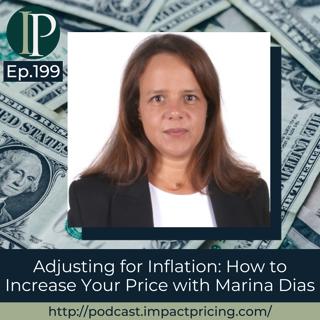
Adjusting for Inflation: How to Increase Your Price with Marina Dias
Marina Dias has been in the pricing industry for almost ten years. Currently, she is the senior pricing expert and consultant at Competera, a company that helps retailers and brands to increase customer trust by setting and maintaining optimal prices in real-time. In this episode, Marina explains why constant communication with clients is essential in creating pricing strategies. She also enlightens us on the concept of price elasticity, and why understanding it is especially important in this time of inflation. Why you have to check out today’s podcast: Learn the importance of having constant communication with your client about pricing strategies despite the widespread of AI and pricing software Understand the concept of price elasticity Find out how you could adjust your prices in this age of inflation “Think about governance; and don’t forget that pricing, at the end of the day, is about people – our customers, our colleagues, and our internal resources of an organization.” – Marina Dias Topics Covered: 01:01 – How Marina got into pricing 02:58 – Why more than just dealing with numbers, pricing is an art 07:12 – Why talking to clients about pricing strategies is still important despite the widespread of AI and “black box” pricing software 10:35 – Competera‘s advice to their clients with regards to dealing with inflation 14:06 – Pricing shall be focused on experience at all times, but pricing strategy and processes are critical in this time of inflation 16:15 – Defining price elasticity and the different factors that affect it 19:37 – Understanding elasticity, and how it plays a vital role in a company’s decision making 23:21 – Pricing table topics: “Don’t raise prices on subscribers who aren’t using the product.” 27:09 – Marina’s pricing advice Key Takeaways: “I would say that we cannot apply stoicism when we are working at our daily business, because it's something that if we forget about the things that we cannot control, they will control us.” – Marina Dias “People migrate between brands. People migrate between competitors. People have the decision at the end of the day, but we have the power to influence. It's one of the variables that we cannot control, of course. It's our costumers’ behavior, but we have the power to influence this through pricing.” – Marina Dias “At the end of the day, elasticity… it's only a number. But it can help us to drive to have scenarios in our hands and to be able to support our decision making.” – Marina Dias People / Resources Mentioned: Competera: https://competera.net/ Connect with Marina Dias: LinkedIn: https://www.linkedin.com/in/marinandias/ Connect with Mark Stiving: LinkedIn: https://www.linkedin.com/in/stiving/ Email: mailto:mark@impactpricing.com
14 Marras 202229min

Blogcast #80: Raise Prices Now
This is an Impact Pricing Blog published on October 5, 2022, turned into an audio podcast so you can listen on the go. Read Full Article Here: https://impactpricing.com/blog/raise-prices-now/ If you have any feedback, definitely send it. You can reach us at mark@impactpricing.com. Now, go make an impact. Connect with Mark Stiving: Email: mark@impactpricing.com LinkedIn: https://www.linkedin.com/in/stiving/
11 Marras 20221min
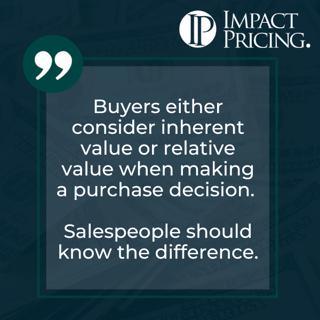
Memecast #83: Queen of Diamonds: Inherent Value and Relative Value
This one is the Queen of Diamonds from the Selling Value card deck. It's true, buyers are using inherent value or relative value. This is how they think about the decision that they're making. And salespeople's job should be to help buyers make that decision so we should understand what's the decision a buyer is making. What's the information they need at any given point in time? Well, inherent value is the value of solving a problem. Do I need to buy a new car? Do I need to buy a guitar? Do I need to buy a new dishwasher, a new refrigerator? Do I need to buy a pencil, a new software application? This is the inherent value, what's the value of solving the problem? So why might I need a new car? Because I just crashed mine. Or it just broke down. Or it's getting old. Or I just got a job where my image is really important. These are all great reasons why I might need to buy a new car. And these are inherent value. Are we thinking about the way our buyers are thinking through do I need to buy one of these or not? Oftentimes after they said yes, then they go into relative value. And relative value is, how is your product better than a competitor's product, or different than a competitor's product? What does it do? How does it behave? So, we start thinking of relative value as comparing different alternatives. Our buyers are truly thinking in those two different ways even if they can't articulate it. As salespeople, we should make sure we understand that so we can help buyers make the best decision for them and for us. We hope you enjoyed this memecast. This is also an example of how Pricing Table Topics works. Grab a deck of our cards, pull a random card, read the saying, then talk for one to two minutes about what that card says. This will improve your understanding and more importantly, your ability to communicate important concepts around value. If you have any questions or feedback, please email me mark@impactpricing.com. Now, go make an impact. Connect with Mark Stiving: Email: mark@impactpricing.com LinkedIn: https://www.linkedin.com/in/stiving/
9 Marras 20222min

Reading Facial Microexpressions for Business and Negotiations with Annie Sarnblad
Annie Sarnblad has a Masters in Cultural Anthropology. She is certified in Facial Action Coding and can numerically code the 10,000 muscle combinations in human expression. With this skill, Annie has been helping companies to make informed decisions. Besides her corporate clients, Annie also helps high-profile families with heightened security needs, individuals navigating charged political situations, educators, peace mediators, medical professionals, and others. In this episode, Annie talks about the importance of understanding microexpressions in business. She also discusses some of the most observable expressions that would enable business people to assess the situation properly and make necessary adjustments when needed. Why you have to check out today’s podcast: Learn about the science behind facial microexpressions Discover how understanding facial microexpressions could help you in your business Acquire knowledge about the most common microexpressions and how to capitalize on them when you are in a business meeting “My piece of advice is for any business to recognize the importance that pricing can play in reaching their growth targets and objectives and making sure that they recognize that pricing has to be rooted in value.” – Annie Sarnblad Topics Covered: 01:42 – Annie explains her skill of being a “human lie detector” 04:11 – The science behind reading facial microexpressions 08:32 – You have no control over facial microexpressions; it just shows 12:19 – No one can really just “smile” for the camera, except when they are actually happy 14:04 – Annie doesn’t remember static faces, only the muscle movements 18:43 – Observing the pupil is the easiest to learn because we are already looking at the eyes 22:02 – Why Annie wanted to learn how to read microexpressions 24:30 – Always look out for “disgust” or the “no” face when you are in a meeting 26:16 – Seeing the “no” face means that you have a choice to make 28:57 – How simply looking for pupil dilation could help you pivot from one topic to another and increase your price 31:05 – Annie’s pricing advice Key Takeaways: “Muscle movement precedes the thought process. Even somebody like me that's hyper-trained and thinks about this 24/7, I can't stop myself from making the micro expressions unless I change my thought patterns and think about something else.” – Annie Sarnblad “Nobody's ever felt cheerful when they get an order to smile.” – Annie Sarnblad “If we're building strategy, we can have incredibly intelligent, high-level strategic brains and know the business, know the industry, know the players. But if we're not understanding how the players are interacting with each other, what their primary motivations are, what's in it for them, if we don't understand what's under the surface, we're basing our strategy on the wrong things.” – Annie Sarnblad “Once people have a vocabulary for the stuff that they see all the time, they then can have a much higher-level conversation.” – Annie Sarnblad “I think people just are so rushed to get everything closed immediately that they sometimes don't use all the information that's available to them to make good choices.” – Annie Sarnblad Connect with Annie Sarnblad: LinkedIn: https://www.linkedin.com/in/annie-sarnblad/ Connect with Mark Stiving: LinkedIn: https://www.linkedin.com/in/stiving/ Email: mailto:mark@impactpricing.com
7 Marras 202233min

Blogcast #79: Reading Buyers Minds
This is an Impact Pricing Blog published on September 28, 2022, turned into an audio podcast so you can listen on the go. Read Full Article Here: https://impactpricing.com/blog/reading-buyers-minds/ If you have any feedback, definitely send it. You can reach us at mark@impactpricing.com. Now, go make an impact. Connect with Mark Stiving: Email: mark@impactpricing.com LinkedIn: https://www.linkedin.com/in/stiving/
4 Marras 20222min
